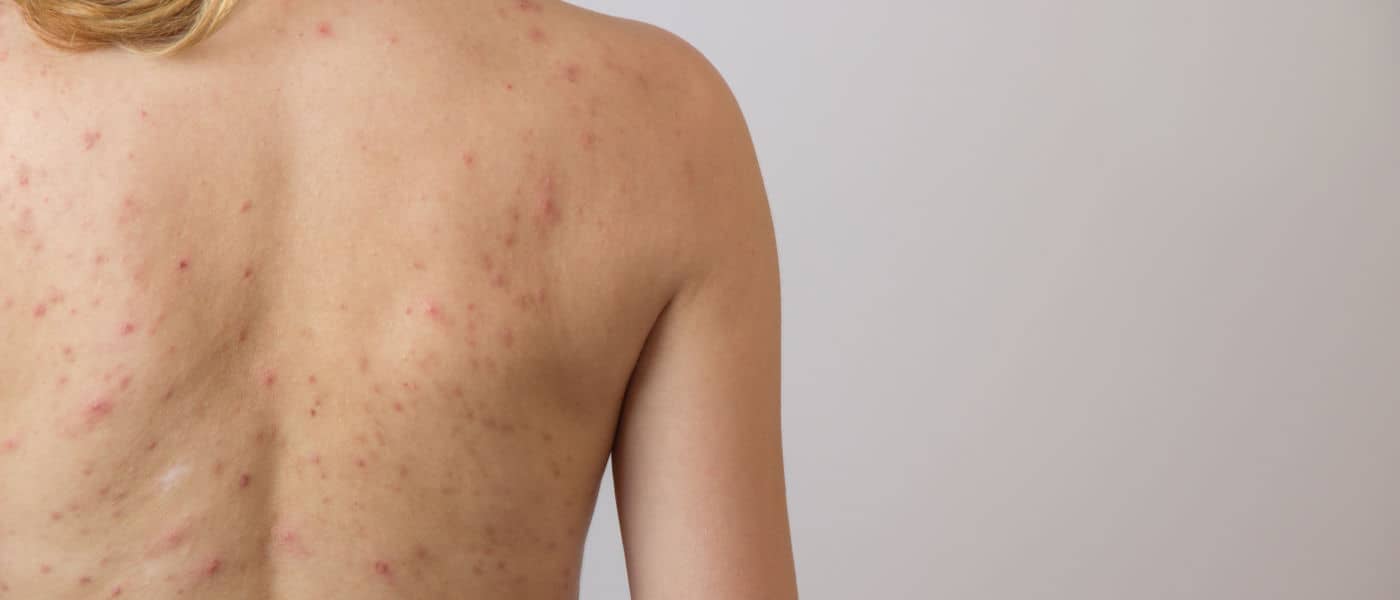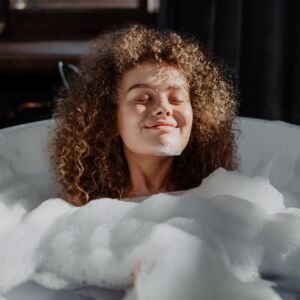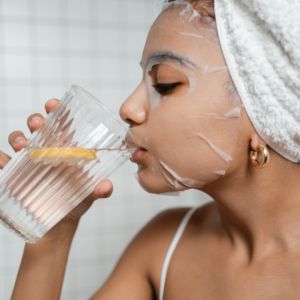Back acne – what is it, why does it happen and how do we get rid of it? These questions were all put to me by Lucy Abbersteen of Marie Claire magazine. For the answers to these questions, please have a read below.
What causes acne to appear on your back?
The reasons for acne appearing on our backs are similar to the reasons acne appears elsewhere. Firstly, excess sebum production. Sebum is the natural oil produced by the sebaceous glands in our skin. These glands are particularly sensitive to hormones known as androgens, even at normal levels. Secondly, a build-up of dead skin cells. These dead skin cells mix with the sebum and get trapped in our pores. The skin on our backs is extremely thick so the potential for blocked pores is very high. Thirdly, bacteria. In those who are prone to spots, the accumulation of oil and dead skin cells in our pores creates an ideal environment for a particular bacterium called Propionibacterium acnes to thrive. This triggers inflammation in the skin leading to angry red bumps and pus-filled spots.
In additions to these causes, there are other lifestyle factors that play a role in the development of bacne. Exercise and heat are good examples of this because the bacteria that cause acne thrive in sweaty, moist conditions. Inappropriate skin or hair care products can also contribute if left in contact with the skin of the upper back for extended periods.
How can it be treated? Is it curable?
There are a number of steps that can be taken at home to help control acne on the back.
Cleanse your skin thoroughly in the shower every day. Use a body wash containing ingredients such as salicylic acid, glycolic acid or lactic acid to prevent dead skin cells from building up and blocking your pores.
If you get lots of under the skin spots or blackheads, using a scrub a couple of times a week in the shower may be effective. Be gentle and don’t rub your skin raw as this can increase inflammation.
Apply a moisturiser to soothe and repair your skin barrier, but make sure that any products you leave on your skin are labelled “non-comedogenic” meaning that they won’t clog your pores.
The bacteria responsible for causing acne thrives on sweaty skin so it’s very important to remove your gym clothes and shower as soon as possible after a workout.
Finally, whatever you do, don’t pick, squeeze or scratch your spots. This can introduce infection and lead to scarring. Apply a benzoyl peroxide or salicylic acid gel to spots instead. I like Medik8’s Blemish SOS Gel with azelaic and salicylic acid or Acnecide benzoyl peroxide 5% gel for this.
Should you switch to a special shower gel, soap etc to help manage it? Any recommendations?
Yes. Using a special shower gel that contains alpha or beta hydroxy acid can help reduce bacne as part of a treatment regime. I also like the BHA sprays and lotions that you can apply post-shower too.
Examples include Paula’s Choice Clear 2% BHA Body Spray and Murad Clarifying Body Spray.
Anything else our readers should know if they’re researching bacne?
If you’ve tried all of the home selfcare tips and skincare products and you are still struggling to get on top of your back breakouts or are aware of developing cysts, nodules, post-inflammatory pigmentation or scars, a Consultant Dermatologist like myself can talk you through the various prescription treatment options to bring your acne under control definitively.
To read Lucy’s full article in Marie Claire, click here.
© 2018 Dr Justine Kluk. Any redistribution or reproduction of part or all of the contents of this post in any form is prohibited. You may not, except with our express written permission, copy, distribute or commercially exploit the content. Nor may you transmit it or store it in any other website or other form of electronic retrieval system.






